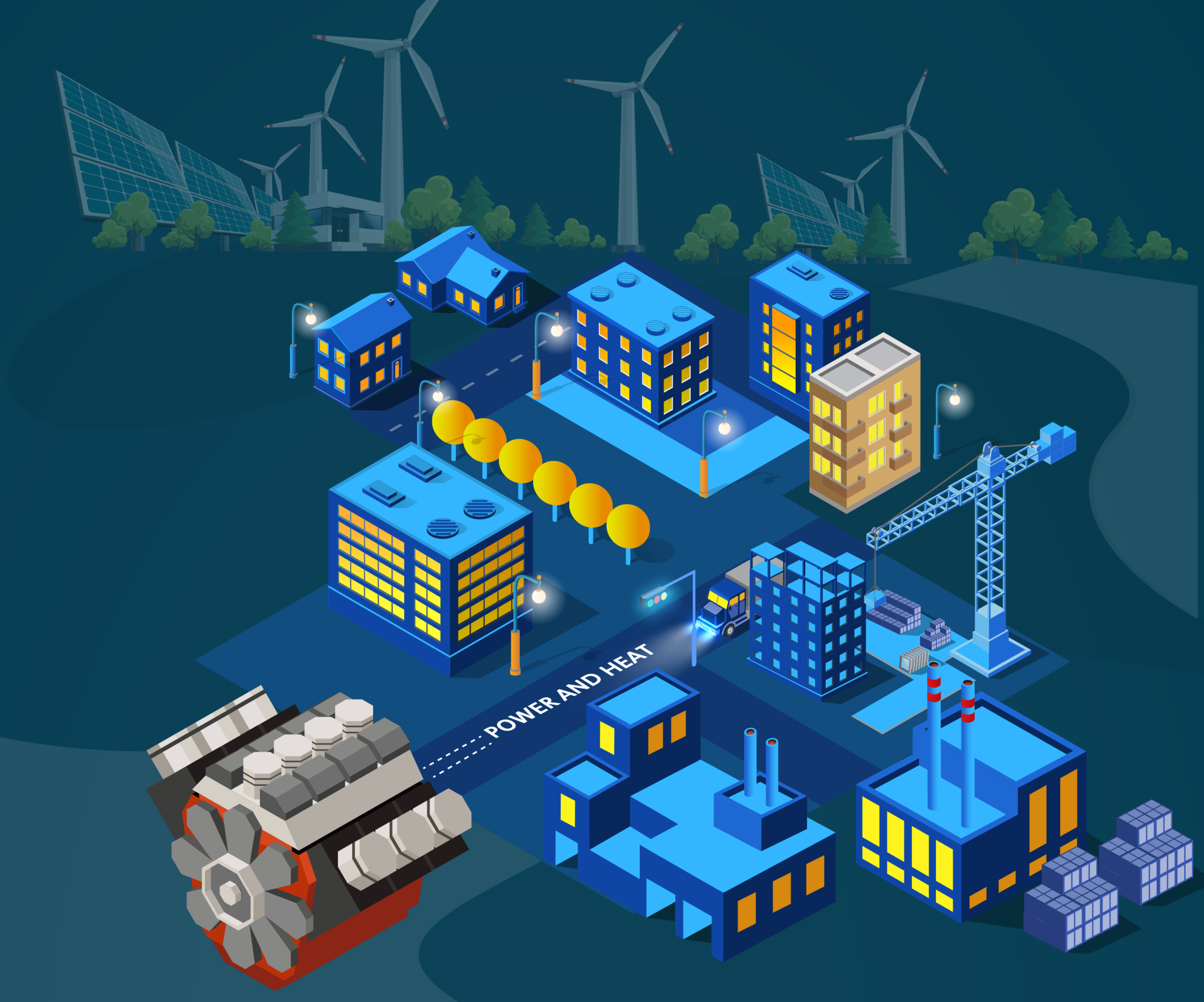Mission 2
Internal combustion engines that can be operated with great flexibility are the perfect match to renewable energy sources. Moreover, they are crucial for security of supply in the energy sector.
Solar energy, wind energy, geothermal energy, bioenergy, hydropower – they all belong to the renewable energy sources. With their help, electricity, heat, and fuels can be generated without the planet-warming effects of fossil fuels. The share of renewable energies in electricity consumption in Germany is growing steadily. While it was still only round 6 percent in 2000, it was already some 54 percent in 2024. Wind power has the largest share, followed by photovoltaics and biomass. Taking into account the decision to phase out nuclear power and coal in Germany, and in order to achieve the Paris climate targets, the share of renewables in electricity production must be significantly increased even further.
But renewable energy sources do not always supply energy. What happens when the wind does not blow and when the sun does not shine? Then neither solar cells nor wind turbines provide enough electricity. This typically happens in the Central European winter, and in Germany, the word "Dunkelflaute" (darkness and no wind) was coined for it. It describes the simultaneous occurrence of darkness and a wind lull. In such a situation, alternatives must be available that can quickly and reliably fill the gaps that arise.
Taking into account the phase-out of coal and nuclear power outlined above, combustion engines will become a mainstay of the energy system in the future. They are capable of fast starts and can therefore react flexibly to the fluctuating power output of renewables. The wide power bandwidth and modular design of combustion engine plants also allow power plants of widely varying sizes, which are particularly suitable for decentralized use. The combustion engine has proven its robustness and reliability over decades and does not produce any CO2 emissions during the utilization phase itself. It is the traditional fossil fuels that are responsible for CO2 emissions during the use phase.
With regeneratively produced, CO2-neutral chemical energy carriers such as hydrogen and co., electricity can thus be produced CO2-neutrally by combustion engines in the future, even by night and when there is no wind (more on this in further missions of this campaign).
More information on the topic here
Competence Center Klima und Energie: https://vdma.org/level-2-minimal/-/category/3802361


